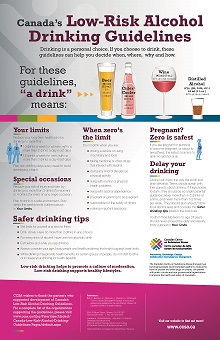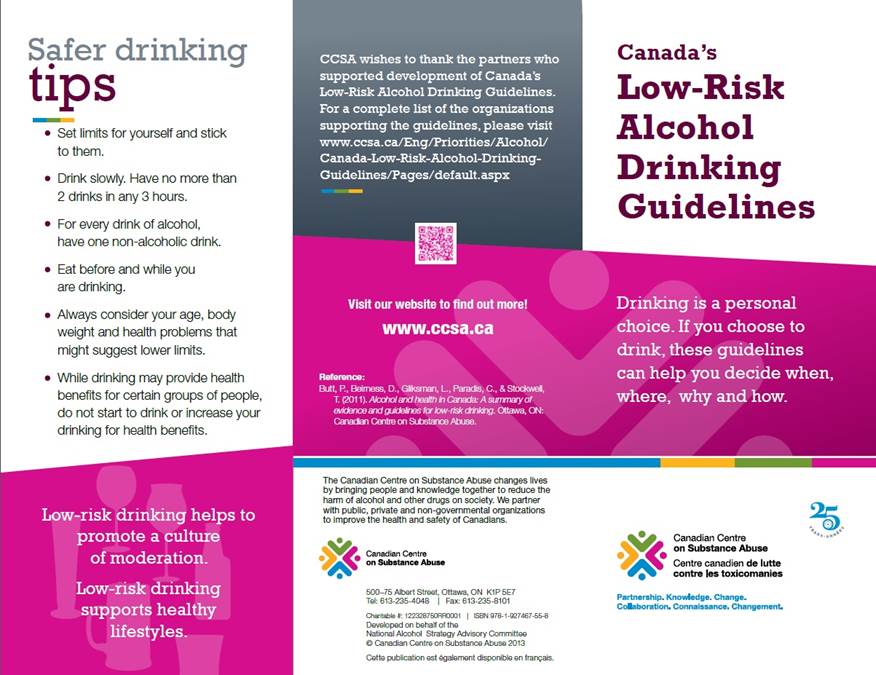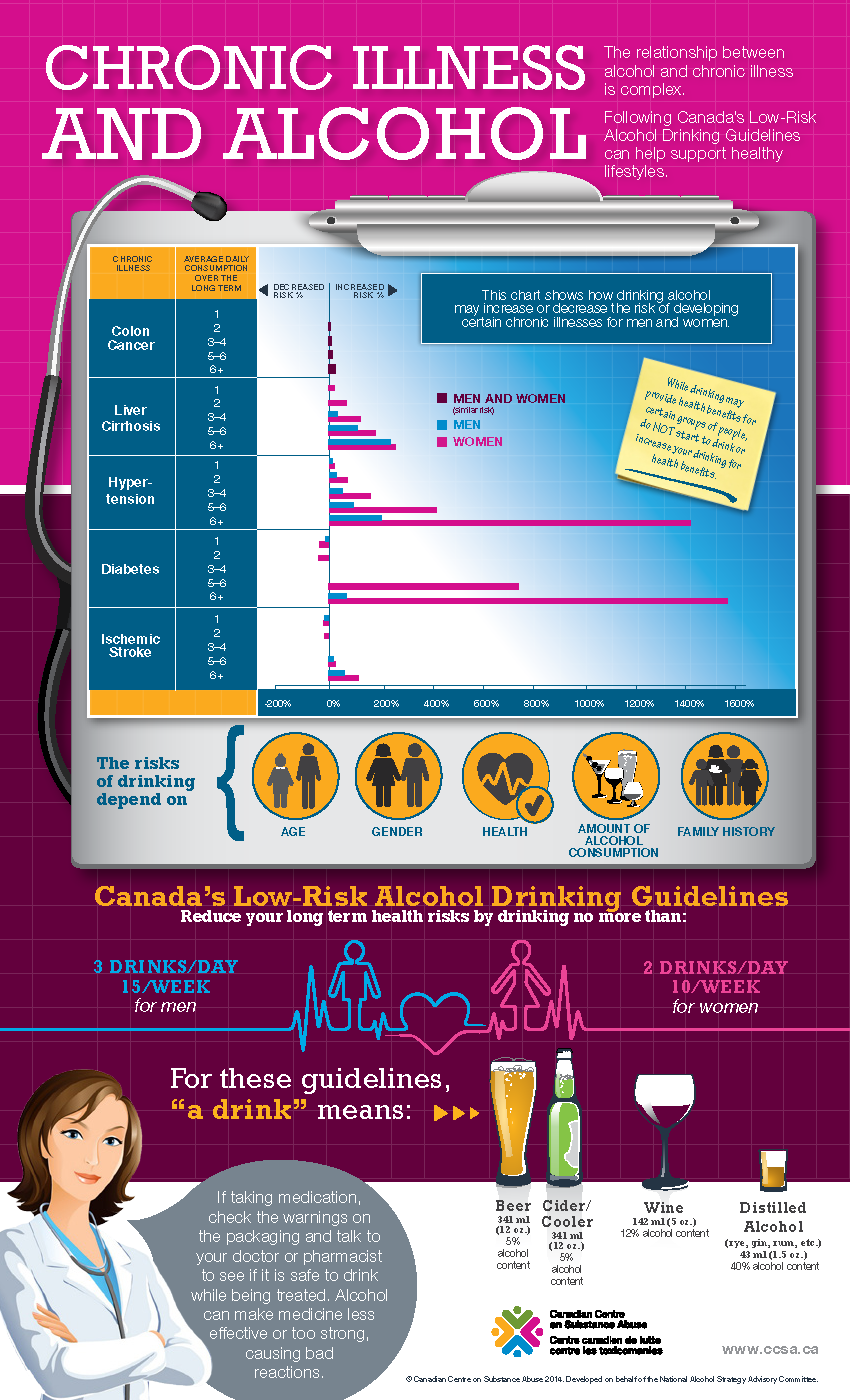Low-Risk Drinking Guidelines
Consumption of alcohol at levels as low as one or two standard drinks per day has been causally linked to significant increases in cancer risk and numerous other serious medical conditions over the long-term. It is of utmost importance to ensure that Canadians are well-educated about the effects of alcohol use, given that alcohol advertising, cultural norms, and conflicting research published in the media create confusion about the risks of use and can actually encourage drinking in excess.
The Low-Risk Alcohol Drinking Guidelines provide evidence-based advice to Canadians regarding how to minimize risks from their own and others' drinking.
The guidelines outline that one standard drink equates 12 ounces of beer, cider, or cooler with a 5% alcohol content; 5 ounces of wine with a 12% alcohol content; or 1.5 ounces of distilled alcohol with a 40% alcohol content.
There are general guidelines for adult men and women, as well as additional guideline for specific populations.The guidelines recommend that adults plan non-drinking days every week, that women drink no more than 2 drinks per day most days and no more than 10 drinks per week, and that men drink no more than 3 drinks per day most days and no more than 15 drinks per week.
Furthermore, they recommend that drinking take place in a safe environment and that zero alcohol be consumed under higher risk circumstances such as operating a vehicle, taking medicine or other drugs, being responsible for the safety of others, making important decisions, while living with a mental or physical health problem, or while pregnant or planning to become pregnant.
The guidelines, brochures, posters, and other handouts to support the dissemination of this information can be found on the CCSA website:
https://www.ccsa.ca/resources-alcohol



While the primary best practice for youth younger than 19 is 'don't drink' or delay drinking alcohol for as long as possible, as it is a reality that many youth do drink alcohol, harm reduction approaches should be balanced with population-based approaches to promote reduction of use or total abstinence. Harm reduction recognizes that it will take place and that users are not abnormal. An example of harm reduction approach to prevention and promotion is the promotion of specific Low-Risk Alcohol Drinking
Guidelines (LRDGs).
The guidelines recommend that youth who do decide to drink while under the legal drinking age speak to their parents about drinking, never have more than one or two drinks per occasion, and never drink more than one or two times during the week. For youth from the legal age to 24 years-old, the recommendation is for females to never have more than two drinks a day and ten drinks a week and for males to never have more than three drinks a day and fifteen drinks a week (CCSA, 2014). The youth-specific guidelines can be accessed on the CCSA website:
https://www.ccsa.ca/youth-and-alcohol-lrdg-summary
The National Alcohol Strategy Working Group recommends that the Guidelines be widely disseminated and used to inform a variety of knowledge-exchange activities, as a component of a well-rounded cross-sectional approach that includes regulating price and availability of alcohol, early detection and brief intervention efforts, and the enforcement of drunk-driving laws (Butt, Bierness, Gliksman, Paradis, & Stockwell, 2011).
Alcohol - 3 Panel Display Available to Borrow